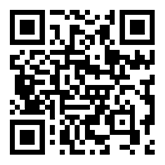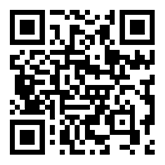Measuring instruments are used in public interest, health, safety, order, environmental protection, consumer protection, travel, taxation, tariffs, etc., all of which are required to meet the requirements of mid in principle. The European Union issued the new mid measurement directive 2014/32/eu in 2014 and implemented it in 2016, which will replace the original directive 2004/22/ec. In the actual operation process, mid mainly regulates the following measuring instruments:
| 计量器具 | CE-模式 | MID的附录 | 协调标准 |
| 水表 | B+F、B+D、H1 | MI-001 | EN14154 |
| 气表 | B+F、B+D、H1 | MI-002 | EN1359/EN12261/EN12405 |
| 电表 | B+F、B+D、H1 | MI-003 | EN50470/EN62058 |
| 热能表 | B+F、B+D、H1 | MI-004 | EN1434 |
| 液体表 | B+F、B+D、H1、G | MI-005 |
|
| 自动称重设备 | B+F、B+D、H1、G | MI-006 |
|
| 计程器 | B+F、B+D、H1 | MI-007 |
|
| 材料测量仪表 | A1、F1、D1、E1、B+E、B+D、H | MI-008 |
|
| 空间测量仪表 | B+F、B+D、H1、G | MI-009 |
|
| 排气分析仪表 | B+F、B+D、H1 | MI-010 |
|
Note: the mid instruction does not mention non automatic weighing equipment. These non automatic weighing devices still comply with the Nawi directive, which has not changed. If there is no specific coordination standard, CE certification shall be carried out according to the directive standard.
Nawi certification is the certification required for non automatic weighing instruments to enter the European Union. The European Union issued the new Nawi directive 2014/31/eu in 2014 and implemented it in 2016, which will replace the original directive 2009/23/ec. This Directive requires relevant weighing instruments to obtain Nawi certificates before entering the European Union market. The definition of non automatic weighing instrument refers to the weighing instrument that needs to be operated by someone in the weighing process.
The mid directive is only for products sold and put into use in the market, which means that there will be a comprehensive coordination for these two situations in Europe. In general, all EU Member States should implement the mid directive for all measuring instruments mentioned above, but it is not mandatory. Member states may choose to comply with the metrological control provisions of the mid directive or not.
The mid directive gives basic requirements for all measuring instruments and special requirements for instruments in special categories (annexes mi-001 to mi-010).
In addition, there is OMiL certification for measuring instruments. OMiL is an international measurement organization, with 60 formal members and 49 communication members. Basically, developed countries have joined the organization. During OMiL certification, measuring instruments that meet OMiL international recommendations are certified, and enterprises can provide their own product image according to this certification.
Mid authentication mode:
Generally speaking, all new method directives are based on a general system of compliance evaluation procedures. This system is described in detail in the European Commission Directive 93/465/eec of 22 July 1993, which also describes the mode of CE certification and the pasting and use rules of CE mark. Each new method instruction is based on this general system, but in order to facilitate the legal measurement management, the mid instruction has made some necessary changes.
The mode of CE certification provides producers with different ways to comply with the mid directive. All modes specify the design and / or production status of measuring instruments.
For different types of measuring instruments, mid gives the conformity evaluation procedures in the relevant appendices. For example, the gas meter is stipulated in mi-002, and it is mentioned in mi-002 that the producer can choose the consistency evaluation procedure of B + F, B + D or H1.
Mode a is based on the DOC of internal production management (a1=+ product test of the designated organization)
Mode B type inspection by the designated authority
Mode C doc based on the type of internal production management (c1=+ product testing of designated agencies)
Mode D doc based on the type of QA production process (d1= doc based on production process)
Mode e DOC of final product inspection and test based on QA (e1= DOC of final product inspection and test based on QA)
Mode f doc based on the type of product approved by the designated authority (f1= doc based on the type of product approved by the designated authority)
Mode G is based on the DOC of a single product certified by a designated agency
Mode h doc based on comprehensive quality assurance system (a1=+ product test of designated agency)
Definition of terms:
Doc: Declaration of conformity QA: quality assurance
All modes have been described in detail in the mid instruction. The letters a, B... H are the type identification of the approval mode, and the number 1 (like A1, C1... H1) is an additional character for a little change. They are all consistent in principle, with only some minor differences.
How to comply with mid?
The manufacturer has a special position in meeting the requirements of mid and its designated testing institutions.
The producer is obliged to ensure that the measuring instruments sold on the market in its name comply with mid, which means that the producer is necessary to be responsible for the production and design of measuring instruments. Therefore, it is the responsibility of producers to understand the design core and structure of measuring instruments to make them comply with this obligation.
According to the requirements of the mid directive, as long as it is a legitimate manufacturer and has the ability to meet the responsibilities of the mid, the subcontracting of the production and design of measuring instruments is allowed.
The manufacturer must prepare a declaration of conformity. This is a formal document, which declares that the prototype of the measuring instrument complies with the mid directive. Every product sold on the market must be accompanied by a copy of the declaration of conformity, and the original is sealed and kept by the designated agency for 10 years. This requirement is consistent with manufacturers inside and outside the EU.
Manufacturers can choose the designated certification authority and voluntarily choose the certification mode under the guidance of the designated certification authority. The designated agency is obliged to do a good job in the inspection of type approval, design approval, test procedures and quality management system certification.
Since mid has no specified test program, there may be many ways to pass the form approval test (mode B). In this way, as a manufacturer, there are three ways to set their products to comply with the mid:
1. The European Commission will publish a harmonized standard in its official journal. If these standards are used and the manufacturer believes that its products meet these standards.
2. According to a standard identification document of OIML, the Committee of measuring instruments will make all or part of the OIML recommendations a very important reference for product evaluation.
3. If there are no standardized documents or harmonized standards, the designated agency must decide whether the product meets the requirements of the mid. This is more convenient for products with technological innovation. When the existing documents can not play a full role, it can create a selective testing program.
Once all the relevant directives are complied with, the manufacturer can affix CE mark and additional measurement mark on its products.
Note: the mid instruction does not mention non automatic weighing equipment. These non automatic weighing devices still comply with the Nawi directive, which has not changed.
The mid directive is only for products sold and put into use in the market, which means that there will be a comprehensive coordination for these two situations in Europe. In general, all EU Member States should implement the mid directive for all measuring instruments mentioned above, but it is not mandatory. Member states may choose to comply with the metrological control provisions of the mid directive or not.
The mid directive gives basic requirements for all measuring instruments and special requirements for instruments in special categories (annexes mi-001 to mi-010).












